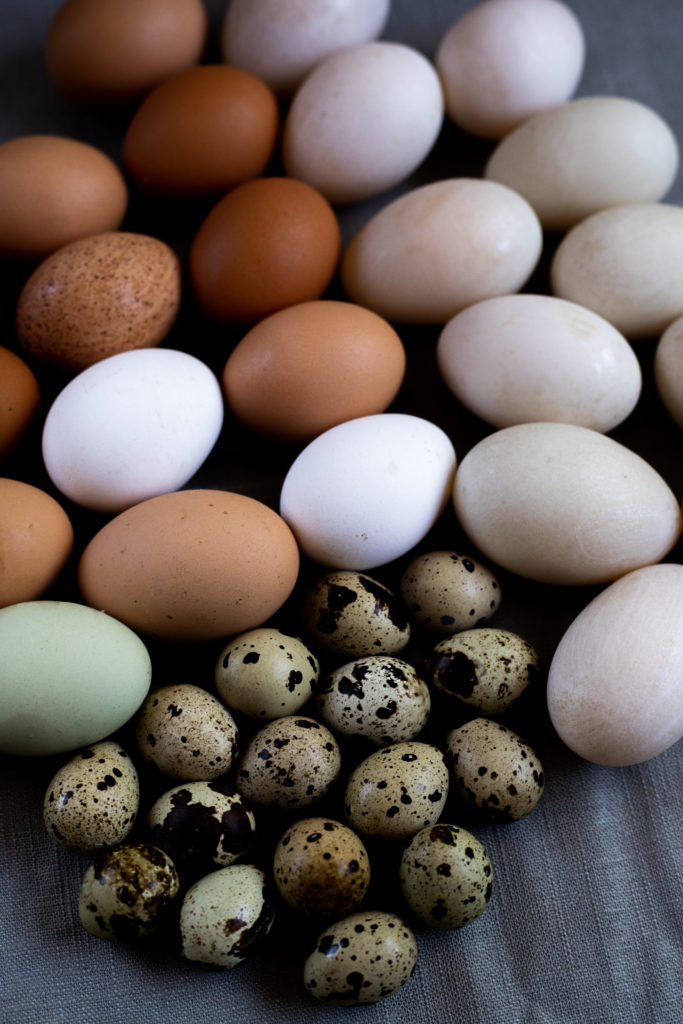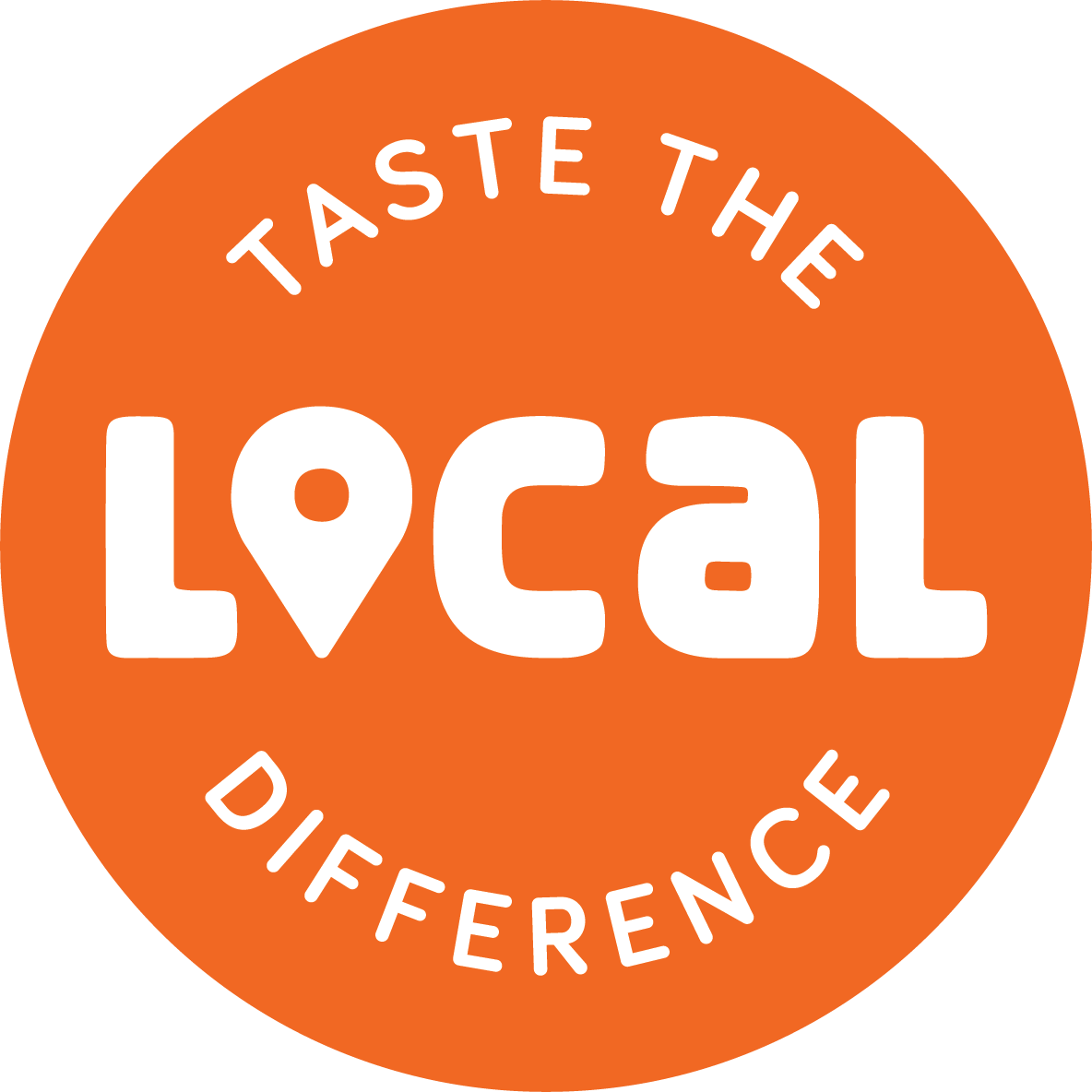As a culinary student, you learn that the best test of a chef’s ability is often in egg cookery. The incredible edible egg can be cooked in so many different ways (watch: Amiel from Bon Appetit cooking eggs for a half hour of entertainment) that line orders for eggs in a diner are almost another language (Adam and Eve on a raft? Two eggs on toast. Two dots and dash? Two eggs and bacon. Eternal twins? With two slices of ham.)

What I remember most from our week of egg cookery in my first cooking course is a color: brightly golden vs. sad pale yellow. Both omelettes, both prepared in the same way, but one looked so much better than the other. It wasn’t a matter of skill level, but rather, source: one was made using local farm fresh eggs, and the other was sourced from a huge box holding rows and rows of commercially available eggs.
While the carotenoids responsible for this deep orange color (see Dan Barber’s red yolk eggs, which are produced from a red pepper diet) can be replicated via marigold petals in commercially raised hen feed, in this case it was due to a pastured diet, which provided the hens with a diet that is exactly what a hen would eat normally. In other words, it was a “normal” yolk produced by a hen eating naturally. For a distinct color difference, check out the muffin pan frittatas I made — can you guess which one came from the farm hen?

The commercial egg business isn’t necessarily known for its wide open fields and big red barns. Take the practice of battery cages, which allows a hen 67 square inches of space for itself (about the size of an iPad) and they’re essentially immobile for their lifetime. Or even “cage-free” eggs, where birds are often packed into aviaries, and they’re twice as likely to die. Additionally, from a food perspective, buying from a commercial source means your eggs may be up to two months old.
I’d much rather pay for a more nutritious and flavorful product, raised locally, which shortens the supply chain to just me and the farmer, therefore ensuring a much more fresh product. I can also talk directly to the farmer about what that hen is raised on, or even what breed it is. Once you’re set on that, it’s just figuring out what kind of eggs to run with.

The Contenders:
Chicken:
The easiest egg to come across, with roadside “farm egg” signs still popular throughout Michigan. The color of a chicken egg changes with the breed: white, brown, speckled, and even easter egg green/blue are all within the range of normal.
Quail:
The most adorable egg of all! While working with an egg so small can be tricky, quail eggs actually have twice as much vitamin B12 and iron as a chicken egg, and can be a healthy (and bite-size!) option.
Goose and Turkey:
These are possible to find in Michigan, but it takes some searching, and often are found at $6.00 an egg. These birds lay larger, but much fewer, eggs, so sourcing can be difficult, as most farmers with geese and turkeys will want to keep those eggs for their flock.
Duck:
My favorite option for farm eggs! Duck eggs are different to chicken eggs in that they have a thicker shell, and have a larger yolkwhich, in my opinion as a sunny-side up orderer, makes it richer, and just plain better. The muffin pan frittata I made with the duck egg came out like a perfect egg cake. If you’ve gotten your hands on some farm-fresh duck eggs, try making an easy duck egg pasta carbonara for a rich, egg-forward weeknight treat.
Easy duck egg pasta carbonara:
For pasta:
- 2 duck eggs
- 1 cup flour, plus more for dusting
- 1 teaspoon salt
For sauce and the finished dish:
- Bacon ends or chopped bacon (if you use turkey bacon to make this an all-fowl dish, simply add fat in the form of butter or reserved lard)
- Local cherry tomatoes
- 3 cloves garlic
- 1 duck eggs
- 3/4 cup heavy cream
Start by making a “well” of your flour on a clean work surface, and place both duck eggs inside the well. Lightly scramble your eggs inside the well with a fork, allowing it to incorporate the flour slowly. Once your egg and flour mixture has become more like a dough, begin to incorporate all the flour by kneading it into the dough. Once your flour is incorporated, wrap your pasta dough in plastic wrap and set aside for 20 minutes.
While the dough is set aside, halve your cherry tomatoes, mince your garlic and chop your bacon, if necessary. Whisk your sauce duck egg and heavy cream together. Place a pot with water on to boil. Place your bacon in a separate large pot, and start to slowly render the fat and allow it to crisp.
While the bacon is cooking, take your rested dough, and roll it out thin, using additional flour to ensure it doesn’t stick. Once it has been rolled out thin, fold it into thirds. Cut the folded product into strips of your desired width.
Place your cherry tomatoes in with the bacon to become slightly soft, and put your freshly made egg noodles into the boiling water. Stir the noodles in the salted pasta pot to ensure they don’t stick together. After a couple of minutes, your noodles should rise to the top. Add your garlic to the bacon and tomatoes, give it a stir, and then add your noodles, as well as your cream and egg mixture. Turn off the heat and toss all ingredients until incorporated — if not, you risk scrambling the eggs and separating the sauce. Plate and enjoy!

I got my amazing eggs from Morganic Farm in Northwest Michigan, but you can find eggs at most farmers markets, as well as in the TLD online directory. If you’re still set on buying your eggs from the grocery store, be sure to be informed! The Cornucopia Institute produces an Organic Egg Scorecard that gives you all the information you need to know about where your eggs came from.
Claire Butler is the Communications and Outreach Intern for Taste the Local Difference. She is a current culinary student at the Great Lakes Culinary Institute. Contact her at [email protected]
